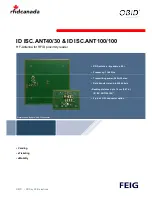
3. The interpose relay contacts are normally wired in series with the operating handle switch, reset motor switch, or
similar control circuit of the dispenser. Take care to ensure that the dispenser is shut off and no product can
be withdrawn whenever the interpose relay contacts are open.
4. Submersible Pump System. When controlling submersible pump systems, attention must be given to pump
control and the dispenser control . The submerged pump is turned on by the first dispenser that is enabled
for a given product. This control is accomplished typically through a relay network that is normally not
associated with the VST Fuel S-810 system. Once the pump is running, fuel can be withdrawn from any
one or all of the dispensers associated with that pump unless each dispenser hose is provided with
individual control. This control may be implemented through the use of electrically operated solenoid
valves.
5. Pulser Wiring. Each dispenser, pump, or hose to be controlled and monitored by the VST Fuel S-810 system
requires a pulse transmitter (pulser). The pulser should be a 1, 10, 100 or 500 pulses per gallon resettable
type.
6. Run Circuit or Fueling-Complete Switch. This switch is used for product count enable and for a fueling complete
signal. This switch normally is part of the electric reset. If the proper switch is not available, a relay may be
used. The switch or relay contact allows the pulser to count into the VST Fuel S-810 input only after the
dispenser computer has been reset to zero. This prevents false counts from the pulser into the meter input
during the reset cycle. The switch, in the off position, provides a contact closure to the VST Fuel S-810 to
indicate that fueling has been completed.
Figure 4. See Drawing
Typical Wiring for a “relay control” of 115 Vac pump or 220Vac Submerged
Pump
VST, 2010
14





































